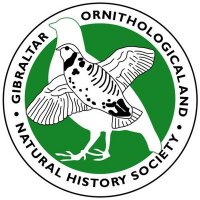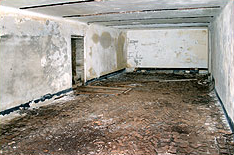
Cave-diving is underwater diving in water-filled caves. It may be done as an extreme sport, a way of exploring flooded caves for scientific investigation, or for the search for and recovery of divers or, as in the 2018 Thai cave rescue, other cave users. The equipment used varies depending on the circumstances, and ranges from breath hold to surface supplied, but almost all cave-diving is done using scuba equipment, often in specialised configurations with redundancies such as sidemount or backmounted twinset. Recreational cave-diving is generally considered to be a type of technical diving due to the lack of a free surface during large parts of the dive, and often involves planned decompression stops. A distinction is made by recreational diver training agencies between cave-diving and cavern-diving, where cavern diving is deemed to be diving in those parts of a cave where the exit to open water can be seen by natural light. An arbitrary distance limit to the open water surface may also be specified.
Krubera Cave is the second-deepest-known cave on Earth, after the Veryovkina Cave. It is located in the Arabika Massif of the Gagra Range of the Western Caucasus, in the Gagra District of Abkhazia, a partly recognised state, previously part of Soviet Georgia.
Formed in 1956, the Australian Speleological Federation Inc. (ASF) is the national body representing those interested in the protection and sustainability of Australia's cave and karst environments. It has approximately 850 members across 28 constituent bodies throughout all Australian states and territories.

Originally from the Atlas Mountains and the Rif Mountains of Morocco, the Barbary macaque population in Gibraltar is the only wild monkey population on the European continent. Although most Barbary monkey populations in Africa are experiencing decline due to hunting and deforestation, the Gibraltar population is increasing. As of 2020, some 300 animals in five troops occupy the Upper Rock area of the Gibraltar Nature Reserve, though they make occasional forays into the town. As they are a tailless species, they are also known locally as Barbary apes or rock apes, despite being classified as monkeys. Spanish speakers simply refer to them as monos when conversing in Spanish, although English is the native language as the area is a British overseas territory.

The Gibraltar Ornithological & Natural History Society (GONHS), founded in 1976, is a non-governmental, membership-based organisation committed to research into and conservation of nature in Gibraltar and the region of the Strait of Gibraltar.

The military history of Gibraltar during World War II exemplifies Gibraltar's position as a British fortress since the early 18th century and as a vital factor in British military strategy, both as a foothold on the continent of Europe, and as a bastion of British sea power. During World War II, Gibraltar served a vital role in both the Atlantic Theatre and the Mediterranean Theatre, controlling virtually all naval traffic into and out of the Mediterranean Sea from the Atlantic Ocean.
There are a number of caving organizations throughout the world.

Prof. Clive Finlayson MBE FLS is a Gibraltarian zoologist, paleoanthropologist and paleontologist. He is the incumbent Director of the Gibraltar Museum. Finlayson has published various works mainly based on his research which includes ongoing excavations at Gorham's Cave in Gibraltar, the last known site of the Neanderthals.

The Gibraltar National Museum is a national museum of the history, culture and natural history of Gibraltar located within the city centre of the British overseas territory of Gibraltar. Founded in 1930 by the then Governor of Gibraltar, General Sir Alexander Godley, the museum houses an array of displays portraying The Rock's millennia-old history and the unique culture of its people. The museum also incorporates the remains of a 14th-century Moorish bathhouse. Its director since 1991 is Prof. Clive Finlayson.

Nun's Well is an ancient underground water reservoir in the British Overseas Territory of Gibraltar. It is located at Europa Point, and is thought to be of the Moorish period. It represents some of the earliest evidence of an artificial water supply in Gibraltar. The name of the cistern is thought to be derived from the nuns associated with the Shrine of Our Lady of Europe. In the eighteenth century, Nun's Well supplied the military with water. In the early nineteenth century, it provided water for the brewery that was built next door. In 1988, the Royal Engineers constructed what is now the main building, which has a castle-like appearance. Nun's Well became the focus of controversy during the 2010-2011 restoration of the site.

Lord Airey's Battery is an artillery battery in the British Overseas Territory of Gibraltar. It is located near the southern end of the Upper Rock Nature Reserve, just north of O'Hara's Battery. It was named after the Governor of Gibraltar, General Sir Richard Airey. Construction of the battery was completed in 1891. The first gun mounted on the battery was a 6-inch breech loading gun, which was replaced with a 9.2-inch Mark X BL gun by 1900. The gun at the battery was last fired in the 1970s. In 1997, it was discovered that Lord Airey's Shelter, adjacent to Lord Airey's Battery, was the site chosen for a covert World War II operation that entailed construction of a cave complex in the Rock of Gibraltar, to serve as an observation post. The battery is listed with the Gibraltar Heritage Trust.

Operation Tracer was a secret Second World War Royal Navy military operation in Gibraltar, a British Overseas Territory and military base. The impetus for the stay-behind plan was the 1940 scheme by Germany to capture Gibraltar, code-named Operation Felix. Operation Tracer was the brainchild of Rear Admiral John Henry Godfrey, the Director of the Naval Intelligence Division of the Admiralty.

Rock Gun Battery is an artillery battery in the British Overseas Territory of Gibraltar. It is located on the North Face of the Rock of Gibraltar at the northern end of the Upper Rock Nature Reserve, above Green's Lodge Battery. The emplacement on Middle Hill is at the northern summit of the Rock. It was constructed during the Great Siege of Gibraltar, due to its advantageous position and the success of the gun at Green's Lodge Battery. It was used effectively during the Great Siege and was rebuilt during the Second World War. During the mid-twentieth century, the Ministry of Defence began to use the site as an aerial farm, which was then refurbished in 1958. The Rock Gun Battery and the Middle Hill Battery were closed to the public for decades. In 2005, the radio farm was closed and the Ministry of Defence withdrew from most of the area, transferring it to the Government of Gibraltar. However, the summit, the site of the Rock Gun Battery, continues to be under MOD authority.

Middle Hill is a hill in the British Overseas Territory of Gibraltar. It is located at the northern end of the Upper Rock Nature Reserve. It figured prominently in the early history of the 1704 siege of Gibraltar by the Spanish and French. The artillery battery at Middle Hill had been constructed by 1727 and was active for more than two centuries. In the mid twentieth century, Middle Hill transitioned to use as an aerial farm for the Ministry of Defence. The radio farm was refurbished in 1958. About 1970, the Princess Caroline's Battery Group of Barbary macaques were moved to Middle Hill, where they were provisioned at a group of derelict buildings that were part of the battery complex. In 2005, much of Middle Hill was transferred from the Ministry of Defence to the Government of Gibraltar, and is now managed by the Gibraltar Ornithological and Natural History Society.

Middle Hill Battery is an artillery battery in the British Overseas Territory of Gibraltar. It is located on Middle Hill, at the northeastern end of the Upper Rock Nature Reserve, just south of Green's Lodge Battery and Rock Gun Battery. The emplacement dates to 1727, when a single gun was mounted. By the turn of the twentieth century, six 10-inch rifled muzzle-loading guns were present at Middle Hill Battery. Other buildings documented at that time as part of the battery complex included the Nursery Hut and the Middle Hill Group, the latter a cluster of buildings which perched on the cliff edge. An anti-aircraft Bofors gun had been installed at the battery by the Second World War. After the war, the area transitioned to use as a Ministry of Defence aerial farm. In 2005, the battery and surrounding area were transferred to the Government of Gibraltar. The site is now managed by the Gibraltar Ornithological and Natural History Society.

Brigadier Sir Richard Gambier-Parry, was a British military officer who served in both the army and the air force during World War I. He remained in military service post-war, but then entered into civilian life for more than a decade. In 1938, he was recruited by the head of the Secret Intelligence Service. Gambier-Parry led the Communications Section of the SIS during World War II, and assembled a clandestine wireless network that connected the United Kingdom with SIS agents in many countries, as well as helping to create the SIS resistance network in Britain. During the war, he was also recruited by the Director of British Naval Intelligence to serve as the radio consultant for Operation Tracer in Gibraltar. Post-war, he ran a network of secret listening stations.

Surgeon Lieutenant-Commander Bruce Cooper was a native of Castle Eden, England. He obtained his medical degree from Durham University. Early in his career, he tended to coalminers and joined the Royal Naval Volunteer Reserve. The physician served with distinction in the early period of the Second World War and was mentioned in despatches. In 1941, he was recruited for a highly classified mission, Operation Tracer. In the event that Gibraltar was taken by the Axis powers, he was to be sealed into a secret chamber in the Rock of Gibraltar with five other men for about a year and report the movements of enemy vessels. Over a period of two years, the secret complex was completed and the team assembled and trained. However, the mission was never activated. Cooper returned to England and served in both civilian and military capacities. The location of the secret chamber remained a mystery for decades, but was finally discovered in 1997. However, many questions remained, including the identity of the team members. Upon Cooper's return to Gibraltar in 2008, he confirmed that the cave in question was that which had been destined for himself and his five colleagues. Dr Cooper was the last surviving team member of Operation Tracer in Gibraltar.

Lord Airey's Shelter is a subterranean military shelter in the British Overseas Territory of Gibraltar. It is located near the southern end of the Upper Rock Nature Reserve, adjacent to Lord Airey's Battery. It was named after the Governor of Gibraltar, General Sir Richard Airey. The tunnel system for the shelter was chosen as the site for the highly classified, Second World War military operation known as Operation Tracer.

Coptic Cave is a sea cave in the British Overseas Territory of Gibraltar. The cave was intended to be used as a decoy to protect Operation Tracer. This was a plan to leave behind spies should the British lose control of the Rock of Gibraltar in World War II.

Leonora's Caves is a limestone cave system in the British Overseas Territory of Gibraltar. They are located within Old St. Michael's Cave.

















